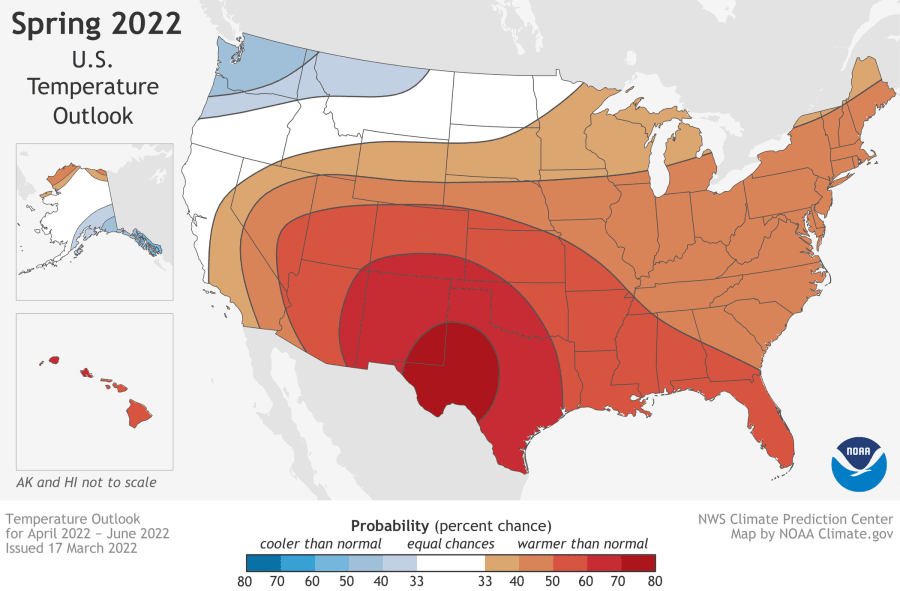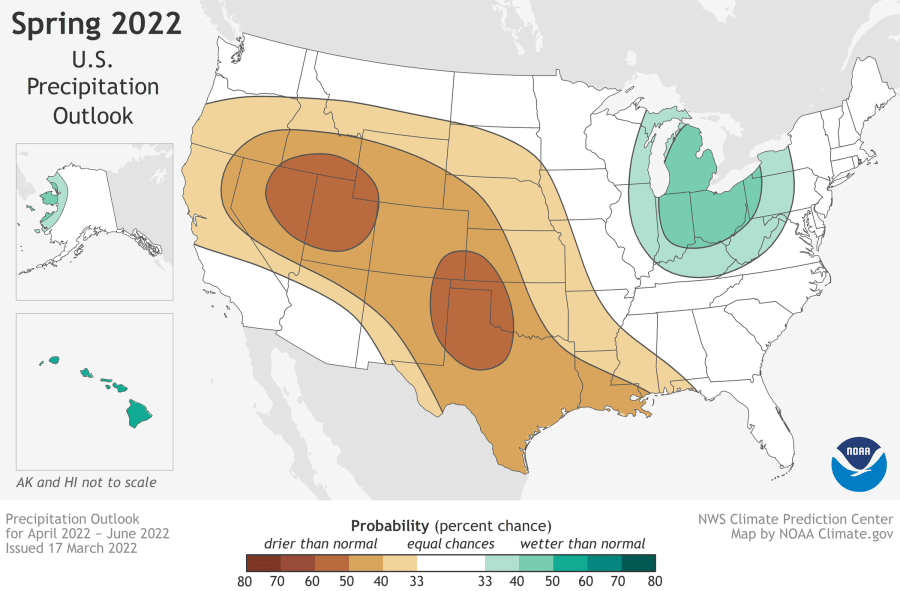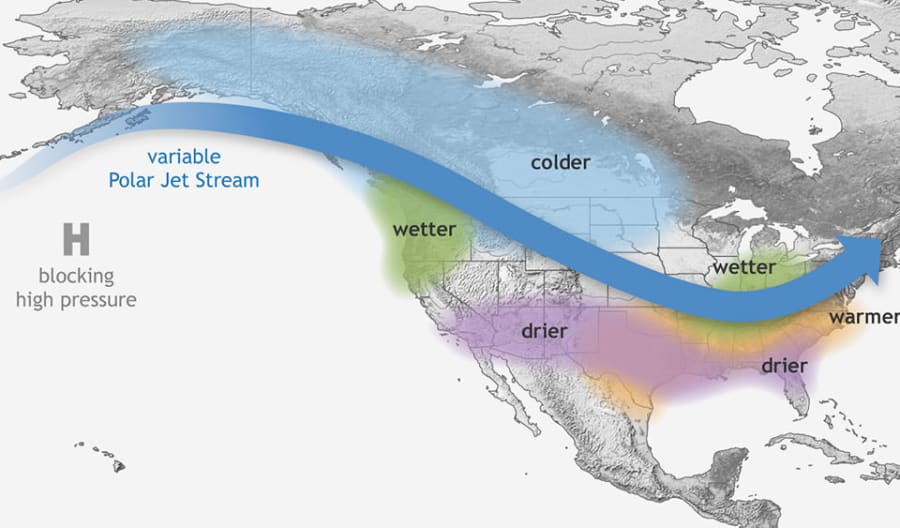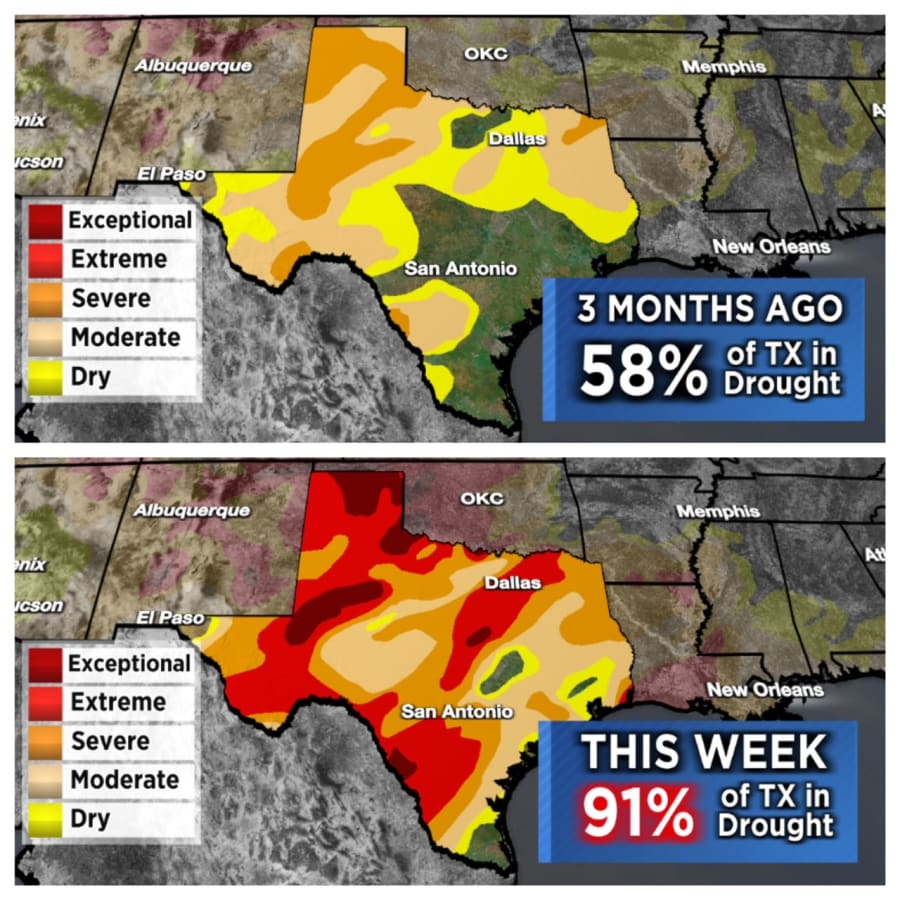We’d like to think that this windy, dry start to March is not a harbinger of how the rest of spring will look. Farmers need rain, our lakes are drying up, grassfires have been a problem, and the Edwards Aquifer has already dipped into Stage 1 restrictions before pumping season is even underway.
But unfortunately, the outlook doesn’t look great. The National Oceanic and Atmospheric Administration (NOAA) put out its annual spring outlook on Thursday. The biggest takeaway from that report:
Recommended Videos
- Prolonged, persistent drought forecast in the West and the state of Texas for second year in a row, and elevated chances of a much warmer and drier than average spring across much of the West (including Texas).


Keep in mind that these are long-term outlooks and they don’t speak to specific situations. In San Antonio, history has told us that we can go weeks with drought, only to be hit by a massive flash flood caused by just one event.
In general, though, drought will be the main storyline. We’ve seen this song and dance before and you can place much of the blame on La Niña, which of course is a long-term climate pattern that can drive weather patterns in the United States. It typically results in drier than normal conditions here in South Texas. Here’s the latest La Niña update:
- La Niña has been with us since 2020 and while a weakening was expected, La Niña actually strengthened to start 2022 in what climatologists call a “double-dip.”
- La Niña is forecast to persist through summer 2022, hence the bleak outlook for rain
- In an interesting twist, La Niña years tend to bring fewer rain events, but higher risks of severe weather, including hail and tornadoes, during the spring in the south-central United States.
- Should La Niña persist into the summer and even fall, then a higher-than-average Atlantic hurricane season would once again be possible.

In the short term, the drought has definitely gotten worse. Take a look at how drought conditions have increased locally over the past three months. Based on these outlooks, expect this to get worse before it gets better.


Find daily forecasts from KSAT meteorologists on the KSAT weather page and more in-depth reporting about the environment on our Forecasting Change page.


